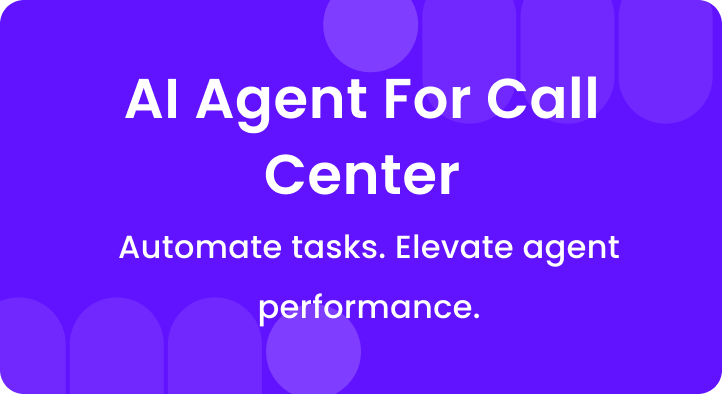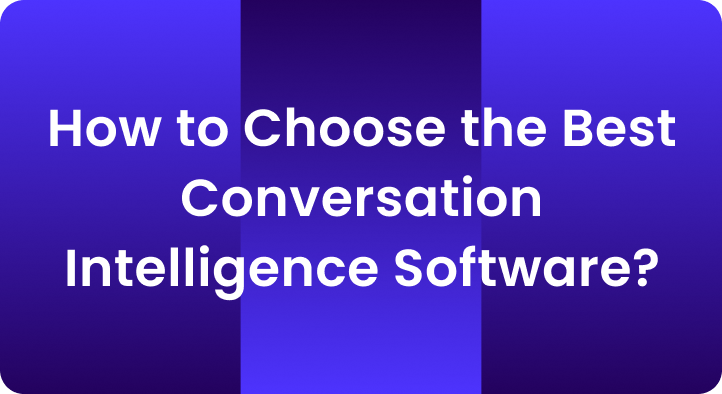What if we told you there’s a simple tool that can instantly propel your contact center’s performance to new heights, boosting customer loyalty and driving business success?
Wondering what we’re talking about?
It’s Voice of Customer (VoC).
In an era where customer satisfaction is the bedrock of any thriving business, the use of Voice of Customer tools has emerged as a transformative strategy, capable of delivering remarkable results.
Recent data underscores the power of this tool – studies show that 85% of marketers prioritize customer satisfaction for company success, with 90% of businesses regularly using online surveys to collect customer feedback.
The winds of change are blowing, urging businesses to listen to their customers like never before.
Table of Contents
A. What is Voice of Customer (VoC)?
Voice of Customer (VoC) tools play a pivotal role in the modern contact center by enabling businesses to capture and analyze customer feedback, sentiments, and preferences to understand their experiences and expectations.
It’s about tuning in to the voices of those who matter most – your customers – to drive improvements, innovation, and excellence throughout your business.
VoC isn’t just about feedback; it’s a strategic catalyst that revolutionizes your business.
It unlocks a wealth of customer insights, allowing you to tailor products, services and interactions to meet their exact needs.
B. Types of VoC data
Voice of customer tools capture customer feedback through various channels, resulting in three types of data:
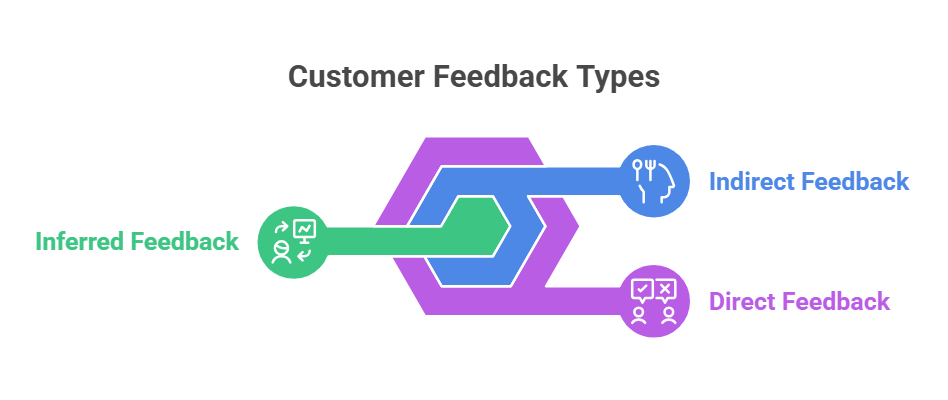
1. Direct feedback
This includes feedback that customers explicitly provide through surveys, reviews, feedback forms, and other structured interactions.
These insights offer specific details about customer preferences and experiences.
2. Indirect feedback
This data is collected from sources like social media, email, online forums, call recording and comments sections, where customers discuss their experiences without being directly prompted.
Indirect feedback provides a more organic view of customer sentiment.
3. Inferred feedback
This type of data is derived through analysis of customer behaviors, such as browsing patterns, purchase history, and engagement metrics.
It helps understand customer preferences and expectations even when explicit feedback is lacking.
C. 9 Best Voice of Customer (VoC) Tools
Knowing customers’ opinions helps businesses wanting to improve their products and services. Voice of Customer (VoC) tools help collect and analyze customer insights. Here are ten notable voice of customer tools with pricing details, free trials, supported languages, and G2 reviews for each one.
1. Enthu.AI
Enthu.AI is a conversation intelligence tool for automated call monitoring and analytics and brings businesses customer insights through transcribing and analyzing calls using an AI algorithm.
It catches on keywords, sentiment trends, and coaching opportunities to enhance agent performance.
Companies use Enthu.AI to optimize their sales calls, enhance customer service, and ensure compliance by remotely monitoring interactions.
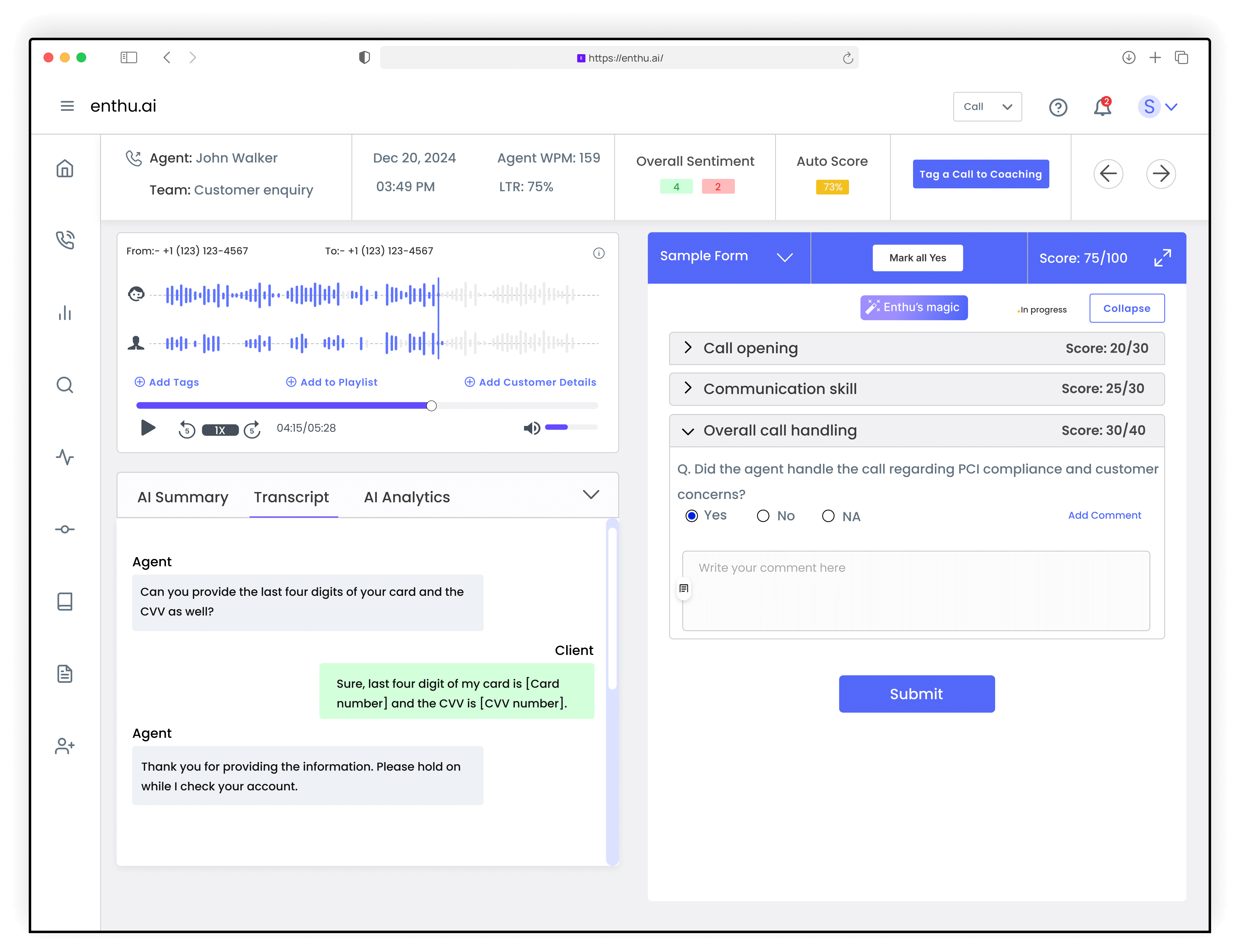

The interface looks nice. Integrations are ready quickly. Have low costs, great monthly subscription. Best call transcription with analysis! Responsive team. Highly recommend!
Alex McConville
Head of Central Sales

Enthu. AI is an amazing and flexible conversational intelligence with strong integration capabilities. Provides high level of accuracy on call transcript and has strong word recognition.
Scott Bierbryer
Chief Revenue Officer
Best For:
- Use cases supported: Quality assurance, agency coaching, process improvement, customer experience.
- G2 Rating: 4.9 out of 5
- Languages supported: English, French
- Key features: Top accuracy, 100% call coverage, agent-wise analysis, custom call moments, custom evaluation forms.
- Pricing: Custom
2. Qualtrics XM

Qualtrics XM is a VoC platform that helps businesses gather and analyze customer feedback across multiple channels.
It provides AI-driven analytics combined with real-time insights and custom surveys to improve customer experience.
Companies can leverage predictive intelligence and automation to act upon customer sentiment and trends.
The platform is extensively used in several industries – healthcare, retail, and finance – to improve engagement, loyalty, and decision-making processes based on what customers have to say.
- Pricing: Highly customizable pricing according to the needs of the client.
- Free Trial: Free trial is available.
- G2 Reviews: 4.4 out of 5 stars.
3. Medallia
Medallia offers a complete VoC solution for gathering surveys, social media, and email feedback.
The platform utilizes AI-driven sentiment analysis to understand trends and customer emotions in real-time.
So, the firms use Medallia to enhance customer experience by acting on insights derived from structured and unstructured data.
It is integrated with many CRM and support systems that make it easy to track customer satisfaction and engagement.
- Pricing: Custom depending on business requirements.
- Free Trial: Not publicly specified; contacting Medallia directly is advisable.
- G2 Reviews: 4.5 out of 5 stars.
4. SurveyMonkey

SurveyMonkey is an easy-to-use tool that allows businesses to create surveys and collect customer feedback.
The platform provides pre-designed templates and enhanced functional analysis for evaluation of responses.
Organizations can measure customer satisfaction, employee engagement, and market research.
With automated data visualization and integrations with other business tools, SurveyMonkey is widely used by startups and enterprises alike to help in improving customer experience and business improvement.
- Pricing: A free basic plan and $25 and up monthly for further plans.
- Free Trial: Free basic plan available, trial period for premium features.
- G2 Reviews: 4.4 out of 5 stars.
5. InMoment
InMoment is a VoC platform built to help businesses collect, analyze, and act on real-time customer feedback.
With AI-enabled analytics to enable sentiment analysis and predictive insights, feedback can be collected from surveys, social media, and human-to-human interactions across various channels.
InMoment is mostly used in industries such as retail, finance, and hospitality to enhance overall customer experiences and optimize strategic decision-making.
- Pricing: Customized pricing based on specifications.
- Free Trial: Not free trial.
- G2 Reviews: 4.7 out of 5 stars.
6. NICE CX
NICE CX focuses on Net Promoter Score (NPS) tracking and helps companies assess customer loyalty and satisfaction.
It provides a platform for the collection of real-time feedback, sentiment analysis, and actionable insights.
NICE has integrations with several CRMs to enable trend tracking and customer interaction enhancement. Continuous improvements on VoC insights occur in customer service deliverables and product development.
- Pricing: Customized pricing.
- Free Trial: Details on free trials.
- G2 Reviews: 4.2 out of 5 stars.
7. Zendesk

Zendesk is a customer support platform that incorporates voice of customer tools to capture feedback from various support channels such as tickets, emails, and chats.
Built-in analytics help track customer satisfaction and service performance.
Businesses can create surveys that measure Net Promoter Score (NPS) and Customer Satisfaction Score (CSAT).
With seamless integrations, Zendesk enables businesses and helps them to improve customer engagement and support efficiency.
- Price: Plans are available, starting from $49 per agent per month.
- Free Trial: Offers a 14-day free trial.
- G2 Reviews: 4.3 out of 5 stars.
8. HubSpot

HubSpot Service Hub is a powerful VoC software that aids in customer service by utilizing features such as feedback surveys, ticketing, and automation.
Businesses can utilize NPS, CSAT, and CES surveys to collect insight.
The software integrates with HubSpot CRM, making it easy to track customer interactions and to take action based on given feedback.
Companies use Service Hub to improve support workflows and increase overall customer satisfaction.
- Pricing: A free basic plan is available, while premium plans start at $50 per month.
- Free Trial: 14-day free trial designed for premium feature availability.
- G2 Reviews: 4.2 out of 5.
9. Confirmit (Now Forsta)
Confirmit provides multichannel feedback collection, AI-driven analytics, and customer journey mapping.
It enables businesses to capture customer sentiment through various touchpoints and generate detailed reporting.
The platform is meant for enterprises that need a scalable VoC solution with advanced analytics. Confirmit is very compatible with existing business systems, making feedback management seamless.
- Pricing: Custom pricing.
- Free Trial: Free trial.
- G2 Reviews: 4.2 out of 5.
D. Capabilities and key features
voice of customer tools encompass a range of capabilities, each contributing to a holistic understanding of customer sentiments and experiences:
1. Sentiment analysis
It’s a crucial feature of VoC tools that employs advanced algorithms to understand and quantify customer emotions and opinions present in different forms of feedback.
These tools can analyze written reviews, survey responses, social media posts, and even spoken interactions to determine whether the sentiment expressed is positive, negative, or neutral.
2. Text and speech analytics
Speech analysis utilizes cutting-edge technologies such as Natural Language Processing (NLP) and speech recognition.
These tools transcribe and analyze customer interactions, whether they are written chats, emails, or recorded phone calls.
NLP helps customer care representatives understand the context, intent, and emotions behind text, while speech recognition converts spoken words into text for analysis.
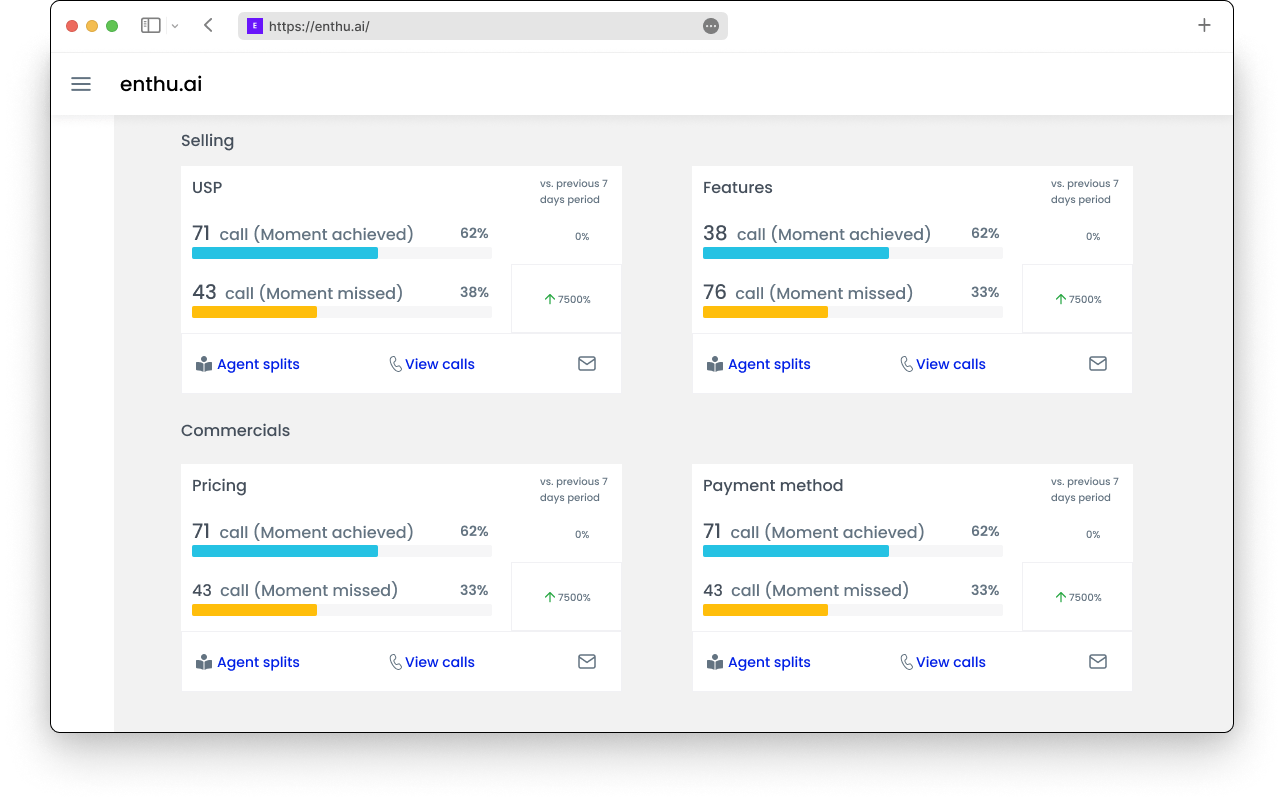
3. Customer journey mapping
This process helps businesses visualize the entire customer experience, identifying pain points, bottlenecks, and opportunities for improvement.
By comprehending the customer journey, contact centers can strategically address specific moments that significantly influence ongoing customer engagement and commitment.
4. Real-time feedback
Real-time feedback mechanisms allow organizations to collect customer opinions and insights immediately after interactions or transactions.
These mechanisms include pop-up surveys, in-app feedback forms, and instant messaging tools to capture customers’ impressions while the experience is fresh in their minds.
5. Net promoter score (NPS) measurement
It’s a widely used metric to gauge customer loyalty and satisfaction.
VoC tools often incorporate NPS surveys, where customers are asked how likely they are to recommend a company’s products or services to others.
Using these tools to measure NPS offers a straightforward and measurable method for evaluating customer emotions and their ongoing connection with the brand as time progresses.
6. Integration with CRM systems
This integration links customer feedback and sentiments to individual customer profiles, allowing contact center agents to have personalized and context-rich conversations.
It ensures that agents are well-informed about customers’ past interactions and concerns, leading to more tailored and effective support.
E. Types of voice of customer tools
There are several types of voice of customer platform available in the market, each serving specific purposes in enhancing customer experience and optimizing operations:
1. Reporting and analytics tools
These tools offer comprehensive contact center reporting and analytics functionalities, presenting insights derived from customer feedback in easy-to-understand formats.
One such tool “Enthu.AI’ which is an advanced Speech Analytics software for call centers.
Enthu is a robust platform that utilizes advanced speech recognition and natural language processing to analyze customer interactions.
Speech to text transcription and analyzing conversations offers valuable insights into customer sentiments, pain points, and preferences.
Finally, it enables data-driven decisions that refine both customer experiences and operational efficiency.
2. Customer feedback and review platforms
These platforms collect feedback from surveys, reviews, and social media, providing a panoramic view of customer tastes & preferences.
Analyzing this data helps contact centers pinpoint areas for improvement and innovation, resulting in tailored strategies that resonate with their audience.
3. Net promoter score (NPS) tools
These tools employ surveys to measure customer loyalty and their likelihood to recommend a brand.
NPS survey tools tools use this information to measure satisfaction, and find out who really likes the company, and who doesn’t. This helps the company improve and keep customers happy.
4. Text analytics
Contact center software such as text analytics processes written customer feedback, extracting meaningful insights to derive customers’ insights and patterns.
Again, an excellent text analytics tool is Enthu.AI which excels at interpreting text-based interactions.
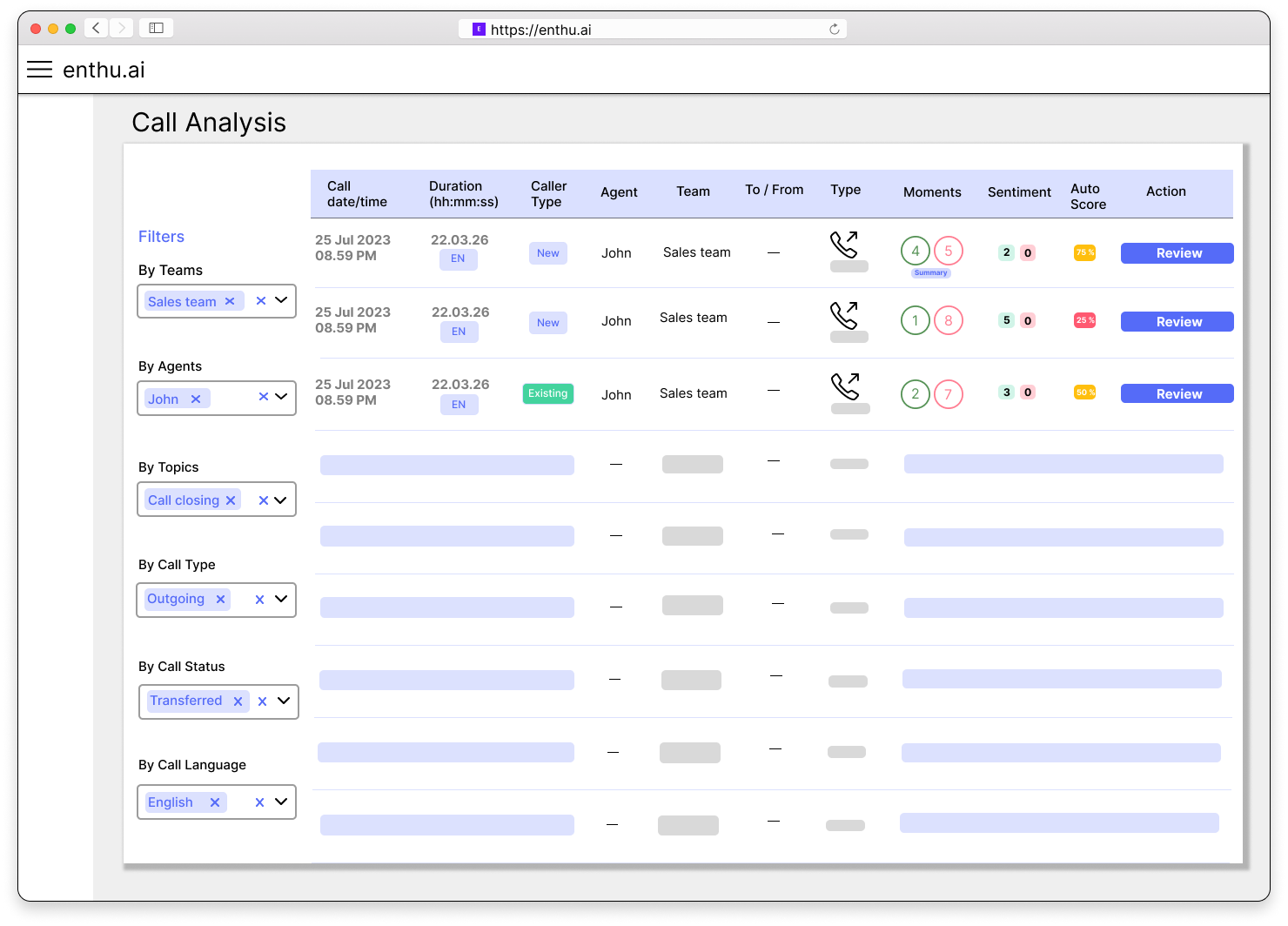
These features help Enthu.AI dive into the subtleties of customer-written communications, enabling businesses to address specific concerns and align their responses with emotional nuances.
5. Customer journey mapping software
These tools visually chart the customer’s path from initial engagement to post-purchase follow-ups.
This insight aids in identifying pain points and moments of delight, informing businesses about where to allocate resources for a seamless journey.
6. Live chat and customer support tools
Live chat and support tools enable real-time interactions with customers.
They collect immediate feedback, assist with issues, and provide a platform for customers to voice concerns, contributing to responsive and attentive service.
7. Customer sentiment analysis
These AI tools offer in-depth insights into customer emotions and opinions, allowing for nuanced understanding.
This helps contact centers improve their job, guide their employees, and make customers feel special and understood.
F. How Enthu.AI will help you?
Enthu.AI is a leading player in the VoC tool landscape, offering a suite of features that empower contact centers to leverage customer data for improved outcomes.
Some of the ways Enthu.AI can assist include:
1. Accurate sentiment analysis
Enthu.AI’s precisesentiment customer analysisgoes beyond simple categorization.
It accurately recognizes nuances in customer emotions, allowing contact centers to understand satisfaction levels better and promptly address any negative sentiments.
2. Keyword recognition
Enthu.AI’s keyword detection feature helps contact centers identify frequently mentioned keywords and phrases during conversations.
This assists in quickly identifying common pain points or concerns that need immediate attention.
3. Performance metrics
Evaluation of agent performance metrics of Enthu.AI aids contact center managers identify strengths and weaknesses among agents.
This information supports targeted training efforts and ensures consistent quality in customer interactions.
4. Trend identification
Enthu.AI’s ability to spot emerging trends and patterns in customer feedback helps contact centers stay ahead of evolving customer needs.
This proactive approach enables adjustments to strategies and offerings to better align with customer expectations.
5. Call monitoring
Enthu.AI’s call monitoring feature allows contact centers to monitor live conversations or review recorded calls.
This capability ensures compliance, quality assurance, quality management and provides opportunities for real-time coaching and improvement of agent-customer interactions.
6. Data-driven decision making
Enthu.AI’s comprehensive customer analysis translates into informed decision-making.
Contact centers can use this data to refine processes, enhance operational efficiency, and strategize for future improvements based on factual insights.
7. Continuous improvement
Enthu.AI’s feedback mechanism fosters an environment of continuous improvement within the contact center.
By finding where things can be made better, contact centers can make their work smoother, leading to happier customers who stick around.
Conclusion
Incorporating Voice of Customer tools in contact center operations has proven to be transformative.
By capturing and analyzing customer feedback, sentiments, and experiences, companies can drive customer loyalty, enhance the customer experience, and ultimately improve overall business performance.
As customer expectations continue to evolve, embracing VoC tools is not just an option but a strategic imperative for businesses looking to thrive in today’s competitive landscape.
FAQs
1. What are the four steps of VoC?
The four steps of Voice of the Customer (VoC) are: Identify the Customer, Collect Customer Feedback, Analyze Feedback, and Act on Insights. These steps help understand and address customer needs to improve satisfaction and loyalty.
2. Is voice of the customer a lean tool?
Yes, Voice of the Customer (VOC) is recognized as a Lean tool. It is used to understand customer demands and preferences, ensuring that processes are aligned to provide the greatest value to the customer.
3. What is VoC in BPO?
In Business Process Outsourcing (BPO), Voice of the Customer (VoC) refers to the process of gathering client opinions, preferences, and expectations regarding the services delivered. Data is collected through surveys, interviews, social media, and other methods to better assess customer satisfaction and service excellence. This input assists BPO organizations in improving their operations, aligning services with client demands, and ensuring a better customer experience.
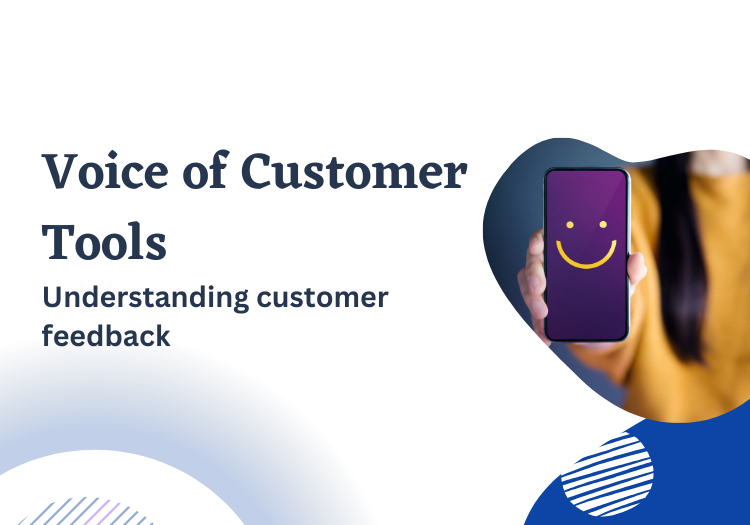
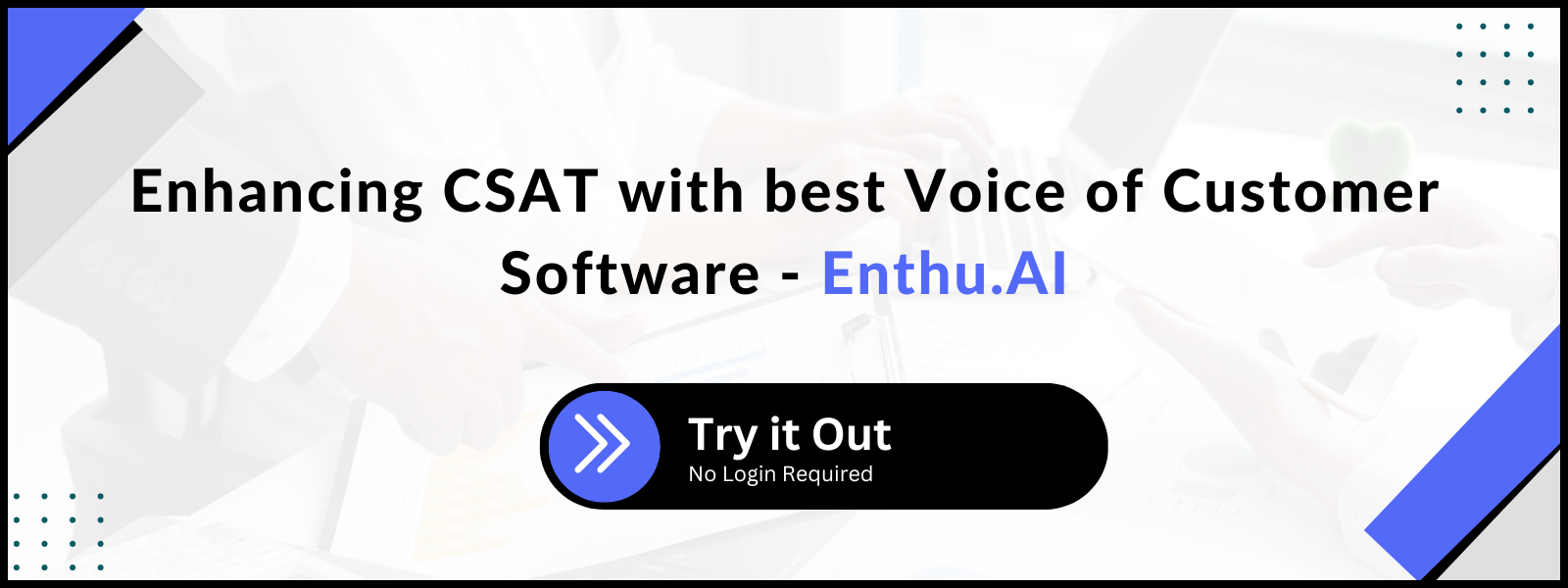



 On this page
On this page
